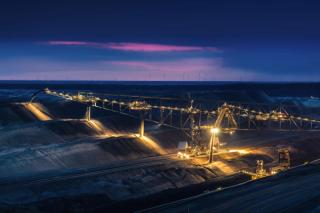
Cultural heritage: Indigenous and cultural heritage values driving sustainable development
by Flavia Kiperman
View post

Computational Fluid Dynamics (CFD) is a branch of fluid mechanics that uses computer based numerical analysis and data structures to simulate, analyze and solve problems that involve fluid flows. With advances in computational processing power and commercial software combined with customized user-defined functions, CFD tools are now routinely used to produce a combined real time internal-external flow and heat transfer analysis, solve a wide range of building design problems and addressing a wide range of environmental impacts associated with the building sector.
Many building applications and modelling have been carried out to evaluate indoor and outdoor building environments under well controlled conditions. Challenges facing CFD for modelling complex built environments includes pedestrian comfort and safety, detailed cladding and pave lift off studies, complex wind-driven rain ingress, wind-generated noise, building generated wind shear and turbulence, natural and mix-mode ventilation studies, thermal comfort assessment, condensation assessment, compliance with the Australian Standard AS 1668.2-2012 limits for CO emissions from vehicles within the carpark., smoke and fire assessment, air quality impact assessment of stacks and helicopter fume emissions and predict the extent of air “hot spots” and “Recirculation Zones” inside plant rooms and associated outdoor units.
CFD wind modelling offers the following advantages compared to wind tunnel testing:
On the other hand, the turbulent (gust) wind flow environment in an urban environment is better modelled with wind tunnel when compared with CFD models employing low end turbulence models. Scale Resolving Simulation (SRS) models are currently used for high Reynolds number flows with strong separation. SRS models such as Large Eddy Simulation (LES) or hybrid LES/Reynolds Averaged Navier Stokes (RANS) approaches are used to overcome the limitation of statistical RANS models and resolve significant parts of the turbulence spectrum in CFD simulations. LES is still prohibitively computationally expensive when used for solving external high Re numbers flows in complex built environment even with today’s computational power. Hybrid Detached Eddy Simulation (DES) is recommended to combine the benefits of RANS and LES while minimising their disadvantages. The RANS can achieve good prediction for attached boundary layers while LES can capture unsteady motions of large eddies in separated regions.
In recent years, CFD has been playing an important role in building design, particularly in optimising the design of sustainable buildings, diagnosing air flow problems during the concept design stage of building projects and promoting innovative engineering solutions.

by Flavia Kiperman

by Jasper Schrijvers , Matthew Hoare

by Clodagh Connolly, Nicola Inge, Andres Schottlaender